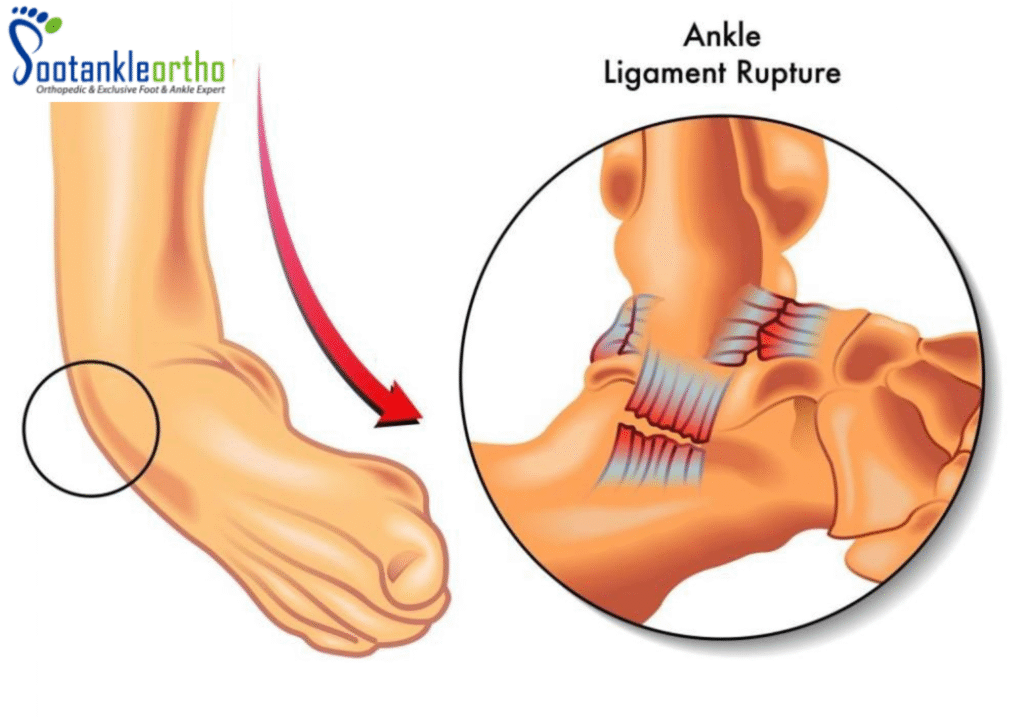Ankle ligament injuries are some of the most frequent musculoskeletal injuries. Understanding their symptoms, different types, available treatments, and recovery process is essential for effective management.
What Are Ankle Ligaments?
Ankle ligaments are tough, fibrous tissues connecting bones in the ankle, providing stability and support for movement. The main ligaments are:
- Lateral Ligaments: On the outside of your ankle, including the anterior talofibular, calcaneofibular, and posterior talofibular ligaments.
- Medial Ligaments (Deltoid Ligament): On the inside of the ankle, less frequently injured due to their strength.
- Syndesmotic Ligaments: Connecting the tibia and fibula above the ankle.
Symptoms of Ankle Ligament Injuries
Common symptoms signaling possible ankle ligament injury include:
- Pain, especially when bearing weight
- Swelling and tenderness
- Bruising
- Restricted range of motion
- Instability in the ankle joint
- Stiffness or difficulty walking
- Sometimes, a popping sound at the time of injury.
Types of Ankle Ligament Injuries
Ankle ligament injuries are classified by severity:
- Grade 1 (Mild): Ligament is slightly stretched but not torn. Symptoms: minor swelling and tenderness.
- Grade 2 (Moderate): Partial tear of the ligament. Symptoms: more swelling, bruising, pain, and some loss of ankle function.
- Grade 3 (Severe): Complete tear or rupture. Symptoms: significant pain, instability, swelling, and bruising; inability to walk on the ankle.
Treatment Options
Treatment depends on the injury’s severity:
- R.I.C.E. Protocol (Rest, Ice, Compression, Elevation): Key first steps within the initial 48 hours to reduce pain and swelling.
- Protection: Crutches, boots, or braces may be needed to off-load weight and stabilize the ankle.
- Medications: Over-the-counter anti-inflammatory drugs (like ibuprofen) for pain and swelling management.
- Physical Therapy: Guided exercises to regain mobility, flexibility, and strength as healing progresses.
- Surgery: Rarely, surgery may be necessary for chronic instability or complete ligament tears not responding to conservative therapy.
Recovery time varies:
- Mild sprains may heal in 2-4 weeks.
- Moderate sprains typically take 4-6 weeks.
- Severe sprains or post-surgical recovery may take 6-12 weeks, with some cases up to nine months for a full return to activity, especially after surgical repair.
Key factors for successful recovery:
- Adhering to rehabilitation and prescribed exercises
- Gradually returning to activity
- Consulting with healthcare professionals if pain, swelling, or instability persist
Prevention Tips
- Warm up before exercise
- Use proper footwear
- Be cautious on uneven surfaces
- Strengthen ankle-supporting muscles
Proactive care and early treatment help avoid chronic instability or repeat injuries. Consult a healthcare provider for persistent pain or supervised rehab
For expert care in foot and ankle issues, consult Dr. Shakti Swaroop. You can book an appointment online at footankleortho.com or call us at 9776414444 or 8587904234 to schedule your visit

